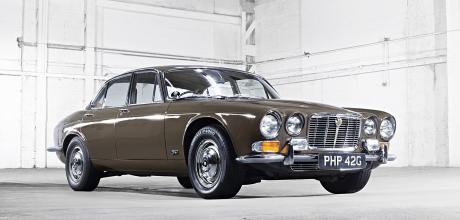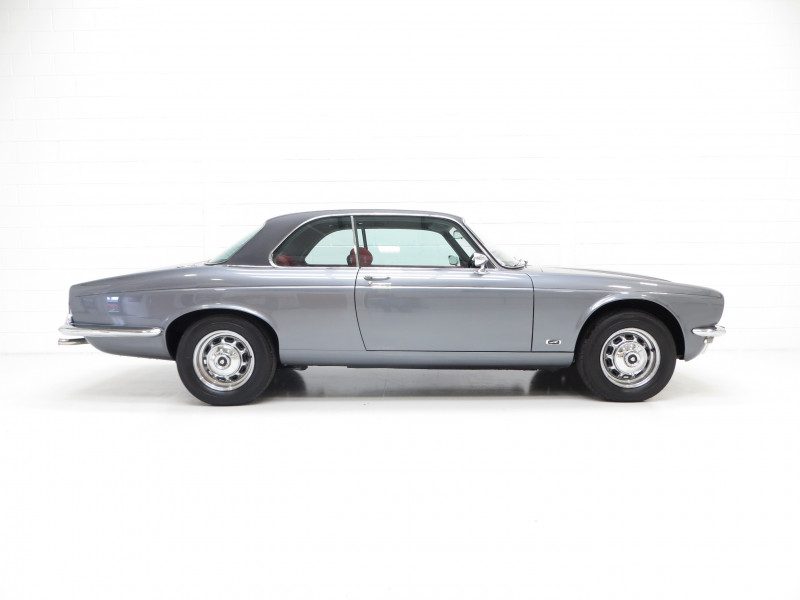Market trends Jaguar XJ6 SI-SIII 1968-1987

Coventry’s game changer holds steady in the sub £20k market, having bounced back from a lockdown plateau.
MARKET TRENDS JAGUAR XJ6 SI-SIII (1968-1987)
The XJ6 galvanised Jaguar’s strategy for more than five decades – and while the full name plate may have died with the X350 series, it left a legacy of affordable three-box luxury for enthusiasts to enjoy.

1968 was when it all came together: a svelte four-door body; Jaguar’s XK straight-six engine, and a subframe-mounted independent rear suspension pioneered in theE-type. It was a tantalising prospect – a powerful, luxurious executive saloon with roadholding equal to that of many sports cars.
Earlier attempts had seen Jaguar try to perfect the formula; while the Mark X, S-Type and 420 have their fans, the latter remains seriously undervalued. None of the XJ6’s forebears quite hit the mark in the same way the new car managed – its two derivations, the XJ12 and XJ-C, are worthy of specific market analyses. The former had a long life, outliving the Series III until its successor, the XJ12 (XJ81) could be made ready in 1992; the latter lived for just five short years, managing 10,426 units and a wild Broadspeed touring car (and an appearance in The Avengers) before its death in the late Seventies.
Alas, we digress.
Offered initially with a pair of XK engines – the 2.8 and 4.2-litre, the Series I XJ6 was a hit upon its launch in late 1968; together with a Daimler Sovereign variant which arrived a year later (not to be confused with the 420-based model, which was built between 1966 and 1969), production moved apace until 1970, when an upgraded Borg-Warner automatic joined the specification sheet.
Two years later, a lengthier ‘L’ variant arrived, followed by the XJ12, a heftily modified XJ built to take Jaguar’s 5.3-litre V12; it was the unit’s second outing in a Jaguar road car following its debut in the Series III E-type. Again, a Daimler variant, the Double Six, was offered.
By 1973, the Series II was ready, bringing a new front end to satisfy Federal legislation in the United States and a thoroughly uprated interior. The option of a 3.4-litre XK engine was brought to the table for the first time; the, 2.8-litre, 4.2-litre, and 5.3-litre XJ12 also continued in production, as did the Daimler Sovereign and Double Six models. Vanden Plas trimmings, in the guise of a separate, more luxurious model, also took the Daimler Sovereigns and Double Sixes further upmarket, for those who could afford them. Bigger changes were afoot, however: 1974 saw long-wheelbase bodies, previously badged ‘L’ and ‘LWB’ across the Jaguar and Daimler ranges, standardised. It was also between 1975 and 1978 that the XJ-Coupe, or XJ-C, outside the scope of this piece, arrived on the scene; widely praised for its beauty, poor quality control became its undoing, with survivors prized and valued accordingly.
1979’s Series III brought controversy and a host of technical upgrades to the XJ6 range. For the first time, an outside consultant – Italy’s Pininfarina – was brought in to update the XJ6 for the Eighties: a higher roofline, a differently raked windscreen, deeper glass, flush door handles and integrated plastic safety bumpers did much to update the car. Fuel-injection revived the 4.2-litre XK, previously strangled by carburation that worked poorly with emissions controls; the Sovereign name, however, migrated to Jaguar from Daimler, its six-pot cars becoming known as 4.2s and staying, when specified with V12s, as Double Sixes. Production continued until early 1987 as a 3.4-litre, 4.2-litre, and 5.3-litre V12 Jaguar range, with 4.2-litre and 5.3 V12 Daimlers comprising the equivalent higher tier. By then, Jaguar had its all-new – and troublesome – XJ40 in production; again, the story of its values and place in the classic Jaguar market is another story altogether.
At auction, rarity, mileage and specification determine XJ6 values – and Daimler/Daimler Vanden Plas models, owing to their scarcity, tend to fetch higher prices at auctions. A word, too, about production numbers: of all Series XJ6s made, the Series IIs were the fewest and far between, even when pre-1974 long wheelbase cars (Including the XJ12) are subtracted and without the extra 10,426 XJ-Cs added to the total.
98,227 Series Is were built; of the Series II, 61,441 were produced, and 132,952 Series IIIs were completed. The Series II, with the fewest made, have long suffered at resale; produced when quality controls were at their lowest, it has taken a long time for Series IIs to fetch similar sums to the SI and SIII. Let’s deal with all-time records first: that belongs to a 1984 Series III 4.2, the most desirable of the XK straight-sixes in XJ6 terms, at least as far as the market is concerned. In 2015, at Coys’ 16 May 2015 sale, an 8000-mile, five-speed manual example made £31,860.
No Series III has broken this in the UK as far as records detail, but for Daimler equivalents. The ex-Minder, 1981 4.2 managed £32,083 at H&H’s Imperial War Museum sale on 20 April 2016. During a lower price period for the XJ6 across all series in 2020, it was a Series III that found the most money under the hammer: the ex Petitjean collection, 1981 4.2 made £11,456 at RM Sotheby’s. Rarity has finally stopped going against the Series II, it seems; since 2017, Series II 4.2s have held steady peak prices and remained stronger than Series IIIs in a catalogued tailing-off of prices at auction between 2020 and 2021.
In 2017, also, a 1975 Series II 4.2 set the UK auction price record — £16,500 at Brightwells, its standardarised long wheelbase bodyshell a boon to its new owner. 2019 also saw a Series II come out on top; a 4.2 managed £17,920 at Historics. By 2021, only a Series I (and a 2.8, at that) could beat a Series II for an XJ6 auction price record; a 1975 4.2 was hammered away for £12,452.
Tellingly, the Series II is beginning to pull away for top sales figures when its most seldom seen Daimler brethren are sold on. 2017 remains the high-water mark: a 1978 Sovereign went for £36,520 via Classic Car Auctions.
Finally, then the Series I, with probably the most steady performance over the past five years; Historics’ 1970 4.2 sold for £15,680 in 2018, and a 1969 2.8 crossed the block for £14,250 in 2021 at the same auction house, having weathered the XJ6 price plateau better than later cars. Specification for Series Is seems less important – with fewer parts available, the kudos of owning an early XJ6 outweighs the performance shortfall.
Despite a dearth of suitable cars, Series I Daimler Sovereigns do not appear to have flown to the stars in the same way as Series IIs and IIIs; the best a 1970 car could manage was £16,100 during Silverstone Auctions’ 2013 Classic Motor Show sale. A market correction could well be imminent for these cars, but recovery back to 2019 levels may be a few years coming.
Series I cars are now hovering around the £15,000 level.
It’s the Series III which holds the ceiling price record for the XJ.
The Series II is finally climbing in value thanks to its rarity.

